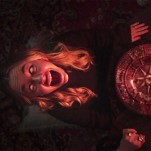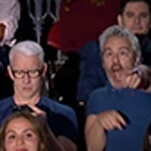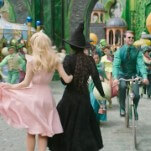Maudie

It’s easy to be impressed by the sheer physical effort Sally Hawkins puts into her performance as popular Canadian folk artist Maud Lewis. Maud was born in 1903 with juvenile rheumatoid arthritis, which led to the hunched-over appearance, crippled hands and near-bowlegged walk that plagued her adulthood. All of this Hawkins has to mimic in Aisling Walsh’s biopic, Maudie, and based on the results on screen, Hawkins certainly seems to have absorbed the mannerisms naturally.
But if acting was judged merely on the basis of technique, then anyone could impersonate a real-life figure, reproducing gestures and mannerisms with something close to absolute fidelity, and be considered great. Truly great acting, though, is as much about the inward as it is about the outward—the spirit, not just the letter. Thankfully, Hawkins’ performance in Maudie is as indelible a feat of psychological imagination as it is of physical dedication.
Maud, at least as she’s reimagined here by Walsh, Hawkins and screenwriter Sherry White, comes off as not too far removed in spirit from Poppy, the character Hawkins played in arguably her highest-profile role to date, in Mike Leigh’s 2008 Happy-Go-Lucky. Though Maud is less brash than Poppy ever was, a similar child-like optimism animates them both to such a degree that they have a quietly profound effect on a male foil. In Maud’s case, this is Everett Lewis (Ethan Hawke), an ultra-masculine fish peddler who reluctantly takes on Maud as a housemaid but who gradually finds himself falling in love with her, at least in his own gruff ways.
-

-

-

-

-

-

-

-

-

-

-

-

-

-

-

-

-

-

-

-

-

-

-

-

-

-

-

-

-

-

-

-

-

-

-

-

-

-

-

-








































